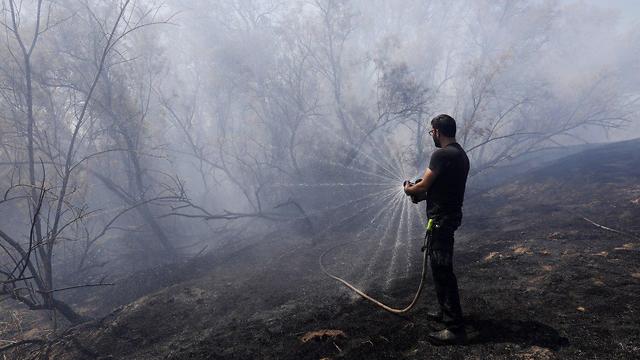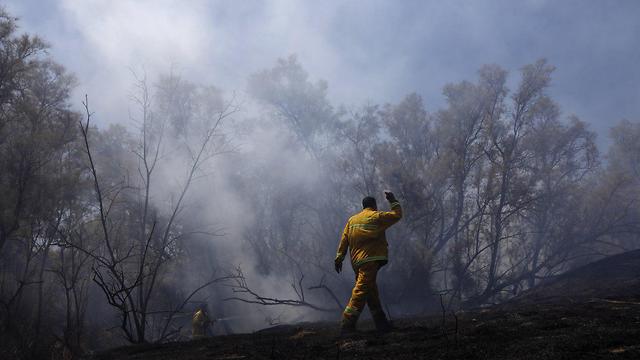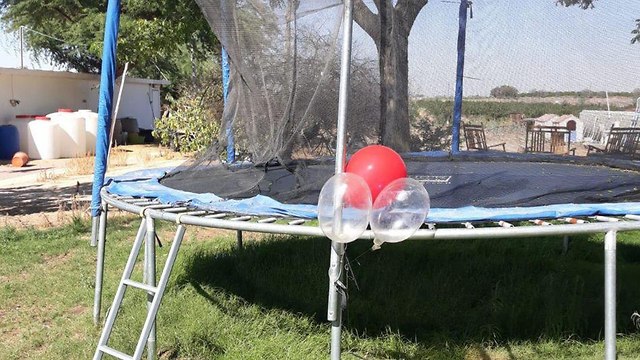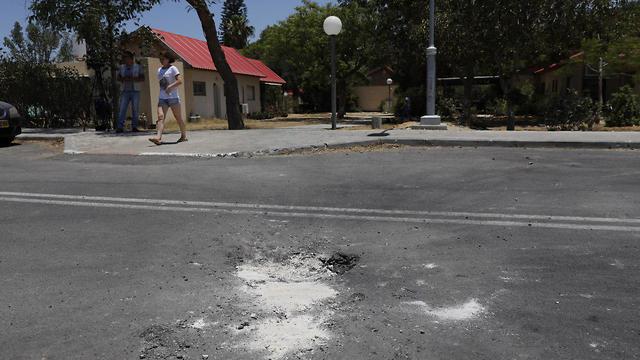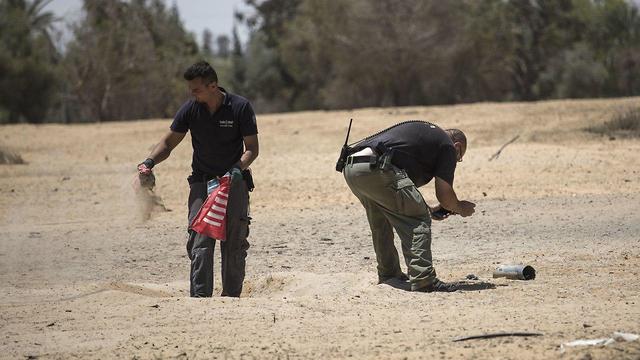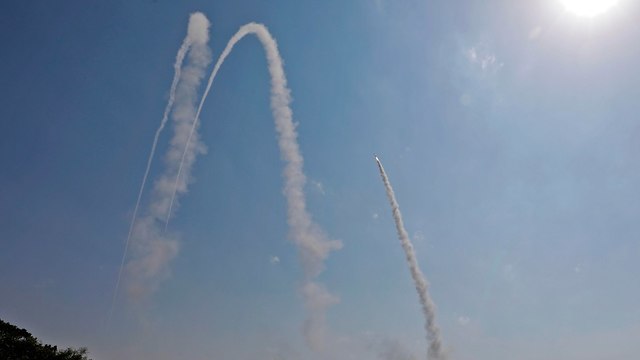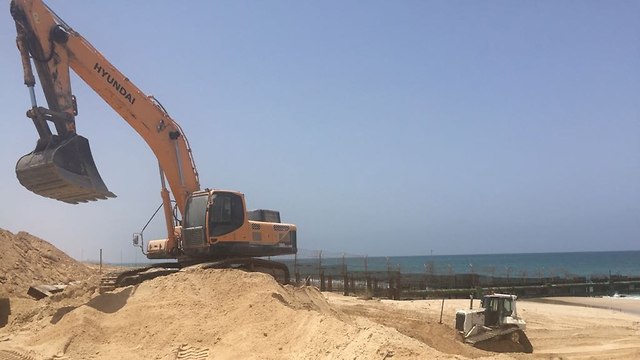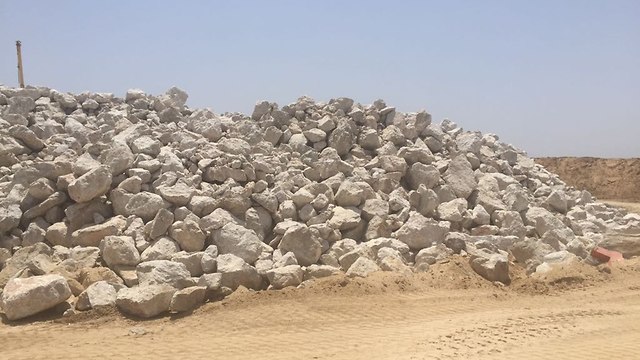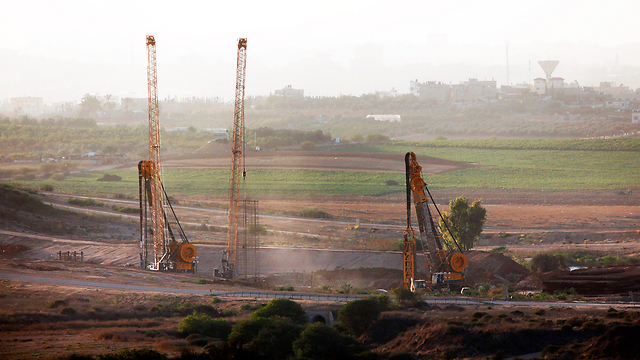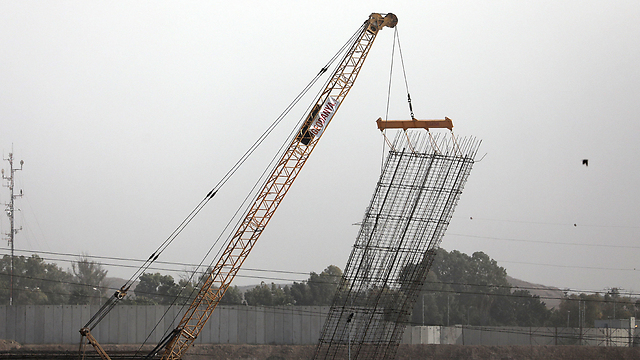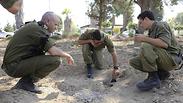

War or an agreement: Israel’s critical dilemma vis-à-vis Gaza
Analysis: Four years after Operation Protective Edge, Israel must decide whether to wait for a humanitarian arrangement in the strip or launch an offensive which could end with renewed control over two million Gazans; the IDF wants an arrangement but has prepared plans for battle, and the political echelon keeps relying on Egyptian mediation and holding theoretical discussions, which won’t prevent another war in the strip.
The “arrangement” the IDF and the cabinet are talking about is not just a humanitarian-rehabilitative arrangement, but a “package deal,” which also includes aspects of a long-term stable ceasefire and restrictions on the military arming of the strip’s armed groups.
To the defense establishment, a war could only result in Hamas, and likely Islamic Jihad too, needing years to recover—if they even manage to recover.
Whether through a political-diplomatic “arrangement” or through a military battle, the goal is to force Hamas to make a clear and long-term decision: Is the organization a civilian government working in the best interest of the strip’s residents, or is it an active “resistance movement”—in other words, an Islamist terroristic militia waging a war of attrition in creative and diverse ways against the State of Israel and its residents with the purpose of expelling us from “the land of Islam in Palestine.”
At this stage, the military move isn’t aimed at toppling Hamas in Gaza. Israel will avoid a situation of complete governmental anarchy in the strip until an effective alternative is found to the Hamas rule. Such an anarchy will most definitely spill into Israel and eventually force the state to regain control of two million Gazans and carry the heavy economic, military and political burden this entails.
The IDF, however, is already considering alternatives to the Hamas government—for if and when the organization makes it clear that it isn’t interested in an “arrangement,” leading to a military campaign which will defeat Hamas its allies in Gaza.
There is a feeling in the Southern Command that, this time, the IDF will be able to create a considerable change in the situation if it is required to launch a major campaign in Gaza. In the years that have passed since Operation Protective Edge, IDF Chief of Staff Gadi Eisenkot and Defense Ministers Moshe Ya’alon and Avigdor Lieberman have allotted resources and put a lot of thought into dealing with the variety of security and public opinion challenges created by the Gazan problem. This was all planned and executed by the Southern Command and its two chiefs in the past few years, Maj. Gen. Sami Turgeman and Maj. Gen. Eyal Zamir.
Turgeman, who commanded the IDF forces that fought in Gaza during Protective Edge, quickly and efficiently fixed the faults discovered in the Southern Command and IDF’s preparations for the operation, and implemented the immediate military lessons drawn during the operation.
Zamir’s mission was to deal with the Gazan front and with the Islamic State in Sinai, while strategically and tactically preparing for major future conflicts on these two fronts.
The Southern Command is basically responsible for two and a half fronts: The two active fronts are Gaza and ISIS’s “Sinai district.” The half-front is the Jordanian border, which doesn’t pose an immediate threat right now, but the instability the Hashemite kingdom is suffering from at this time and the proximity to Sinai provide an explosive potential, which Israel should be prepared for. That’s the reason a border obstacle is being built in the Arava, similar to the one Israel has already put on the Sinai border.
The main tasks on the Gazan front in order of importance were and remain:
- To think, plan, prepare and train the IDF so that the next major battle in the Gaza Strip would lead to a quick and decisive Israeli victory that would force Hamas and the other groups to seek a ceasefire.
- To neutralize the threat of attack tunnels infiltrating our territory and to provide the Gaza border area residents with more efficient physical protection and a sense of security.
- To thwart attempts to abduct Israeli soldiers and civilians, to thwart a mass infiltration of Gazans into Israel and to thwart attempts to disrupt the construction of the barrier along the Gaza border above and below the ground.
- To prevent the strip’s terror organizations from significantly arming themselves with high-trajectory weapons, drones and lethal quadcopters, and thwarting the Gazan organizations’ attempts to prepare “military” surprises with a psychological effect (a victory image) in the next Gaza campaign. (The incendiary kites,
for example, can be seen as a successful “surprise” to boost public opinion in Gaza, despite not being a military measure).
Getting Hamas to request a ceasefire
It’s important to note that the IDF has made considerable progress in recent years in all areas related to the Gazan front. The army has made, for example, significant technological, conceptual and operational breakthroughs that will likely lead to an almost complete neutralization of the threat by the middle of next year.
A significant change has also been recorded in the preparations for the next major battle in Gaza, both on the defensive and the offensive aspects. Strengthening the defensive system includes a reinforcement of the Iron Dome system, which has been upgraded to intercept mortar shells as well.
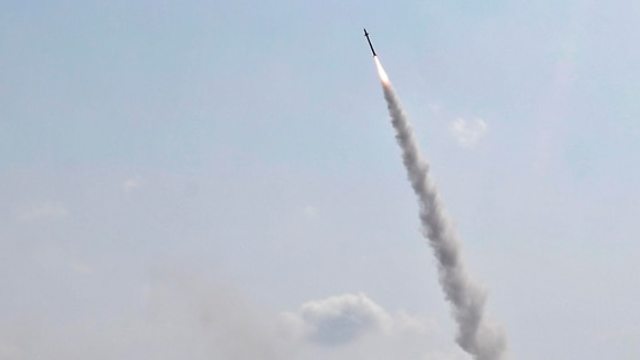
Furthermore, the Gaza Division’s force in times of emergency has been increased, although it will no longer be in charge of offensive missions within the strip. Today, the division has only one mission during times of emergency: Protecting the Gaza border communities and residents as well as IDF troops stationed in the area. For this purpose, at times of emergency the division’s headquarters will be provided with several other territorial brigades that will be deployed deep within the Gaza border area. Together with the two integral frontline brigades, the Gaza Division will have a number of defense brigades, two on the frontline and two deep within the territory.
That’s not all. When the barrier is completed shortly after the end of 2018, it will disrupt and curb attacks on Israeli territory above and under the ground. The establishment of a sea barrier has begun off the Zikim Beach to block naval commando infiltrations into Israeli communities and strategic facilities on Israel’s southern shore. The obstacle will both serve as a physical barrier against infiltrations and warn of such infiltrations.
“The IDF is more prepared for a battle in Gaza than it has ever been, on the offensive aspect as well,” says a senior IDF officer. I have often heard such statements, some of which were unfortunately invalid or insufficiently valid. Today, however, I am pretty confident that the IDF has a detailed operational plan prepared by the Southern Command and that it has trained the forces that are supposed to carry it out.
The offensive missions inside the strip will be carried out from now on by the IDF’s tip of the spear storming divisions, which—according to the plan—will enter Gaza and dissect it in two, and even occupy significant parts of it.
Ynet has learned that the plan for the next big offensive in Gaza is modular and was built in a way that would allow the IDF to adjust it to the political echelon’s demands and to the objectives of the fighting, which would determined by the Political-Security Cabinet.
The plan is based on three things: A strong protection of the western Negev and the Israeli home front, a systemic blow of fire in full force from the very first moment, and a quick broad maneuver into the strip to dissect it and conquer parts of it.
The IDF’s systemic goal will be to prevent Hamas and the Palestinian Islamic Jihad from gaining psychological achievements and getting them to request a ceasefire as soon as possible following the beginning of the fighting. An equally important goal is to prevent a situation in which Israel and the IDF will be dependent upon the skills and goodwill of a third party/mediator in shaping the agreements to end the fighting and in setting a date for the end of the fighting.
The Israeli interest in Sinai
Unlike what happened at the end of Operation Protective Edge because of lazy and ineffective Egyptian mediation, the IDF wants to reach a military victory in the next war that will be so decisive and unequivocal that it will allow Israel to dictate the terms for the end of the fighting to Hamas and to the Palestinian factions. The mediator in the future scenario planned by the IDF will merely assist with the technical details of carrying out the agreement and determining the timetable.
The IDF is dealing successfully with the rest of its objectives, which have to do with thwarting Hamas’ armament attempts and planned terror attacks, through intelligence. The Mossad is most likely taking part in this effort, mainly by gathering information. As a result of these efforts, Hamas and Islamic Jihad have failed to obtain high-quality weapons and precision-guided rockets from Iran and have been forced to focus on self-production.
In this context, we should mention the Egyptians, who have already managed to destroy and decommission 90 percent of the smuggling tunnels on the Gaza-Egypt border in the Rafah area. For this purpose, the Egyptian engineering corps have destroyed all the buildings within 1 kilometer from the border in Egyptian Rafah as part of the al-Sisi government and Egyptian army’s all-out war on ISIS’s “Sinai Province.” Egypt has a strategic interest in severing the ties between Hamas and ISIS-Sinai and stopping the constant flow of Gazan residents who have become religiously radical and are flocking to Sinai to fight together with the jihadist organization.
Sinai is basically the only stronghold ISIS has been left with in the Arab world and in the Middle East, after losing the “big caliphate” it established in Syria and Iraq. ISIS no longer has an Islamic state, but only a district in Sinai with armed forces that are mostly comprised of Sinawi militants (Bedouins from Sinai). However, there is also a group of dangerous Gazan Palestinians, with religious enthusiasm, and a large number of Chechens who have fled Syria and Iraq. This group has not only proved its impressive stamina against the Egyptian military forces, but also its dangerous and creative operational abilities.
So far, the “Sinai Province” people have killed hundreds—and perhaps thousands—of Egyptian soldiers in raids, blew up two civilian planes in the air and drowned an Egyptian navy ship with an antitank missile. Recently, they took over another Egyptian navy ship and then drowned it. Simultaneously, they have been carrying out major terror attacks west of the Suez Canal as well, inside Egypt.
ISIS is a strategic threat to the Egyptian regime, but it also poses a significant terror threat to Israel with quite a few terror attacks in recent years: The 2011 attack on vehicles travelling on Highway 12 to Eilat, the APC attack in the Kerem Shalom area, the rockets fired at Eilat and the threat to passenger planes landing in the southern city.
The Israeli chatter
There is no need to explain why Israel has an interest in helping Egypt in its war on ISIS in Sinai. While I can’t go into too much details, the ISIS-related cooperation between Israel and Egypt has grown very tight in recent years. The Egyptian army is now succeeding in curbing and reducing the ISIS activity in northern Sinai and is on its way to further success. The quality of the intelligence the Egyptian forces on the ground receive has improved significantly, and they are now better capable of quickly stopping attacks from the air. In addition to the F-16s they operate in Sinai, the Egyptian army recently purchased armed drones from China, and they are now capable of destroying targets from the air shortly after identifying them.
The Israeli army and the Egyptian mediators have been less successful, however, in the diplomatic area and in the Gazan context. The IDF has detected that Hamas is desperate for an arrangement that will rescue it and the strip’s residents from their horrible distress in all areas, and first and foremost from the humanitarian distress which is threatening to turn into a humanitarian crisis. Hamas’ distress is so big that although it is deterred and doesn’t want a war, and isn’t militarily prepared for one, it will have to initiate a war or be dragged into one in order to escape the dead end it has reached.
Israel doesn’t want to start or get dragged into a war either, which is why a diplomatic economic-humanitarian arrangement is the favored solution by all sides. But the Egyptians, who are currently the only influential mediator, are dragging their feet, just like they did during Protective Edge. At the time, Israel put the Egyptians in charge of the negotiations for a ceasefire, but as a result of their failed management, the fighting continued weeks beyond what was necessary.
Now, the Israeli government is repeating the same mistake. Instead of searching for and finding a mediator or an effective group of mediators among influential elements in the region and in the international arena—elements with the ability and desire to help with Gaza’s humanitarian reconstruction—the cabinet is holding endless theoretical and philosophical discussions on projects that will be implemented—if at all—years from now. The next battle in Gaza, which will leave IDF soldiers and thousands of Gazans dead, won’t be prevented by this chatter.














